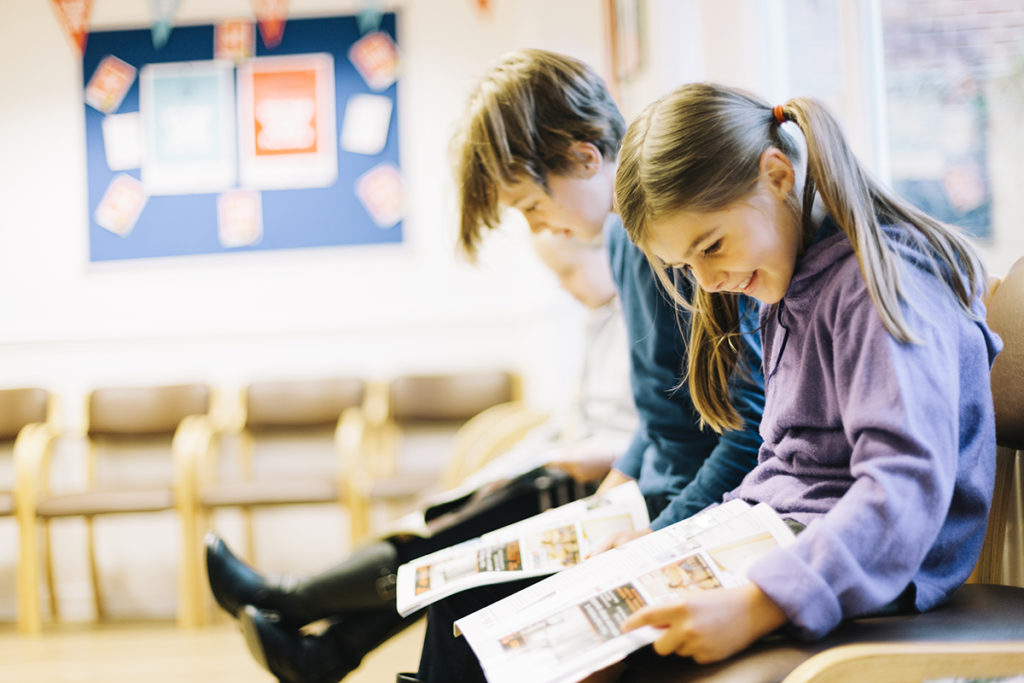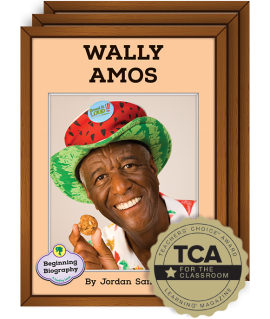Getting Creative with Current Events
Keeping your students informed about the world around them is an important part of your job. Teaching current events in your classroom provides opportunities to model for students how to develop their own perspectives and navigate complex issues. You can help your students understand what’s going on locally, nationally, and internationally while helping them become engaged citizens.
Kat St. Pierre writes in Montessori Life, “Life is a combination of beautiful, wondrous, and often complex stories. Children are incredibly perceptive to the world around them, and though some might not have the vocabulary to communicate it, they are aware of both the beauty and complexity in their environments.”

Why Teach Current Events?
Some teachers may feel hesitant to use current events in their classrooms because they can involve difficult topics. Questions will arise for which we don’t have the answers— and that’s okay! The goal is to equip our students to successfully engage with the world outside our classroom. We need to teach them how to ask and learn from difficult questions.
Olugbemisola Rhuday-Perkovich says, “…the truth is, whether we try to seal ourselves and our communities off from ‘negativity,’ or work to engage young people with their world in a variety of ways, our choices tell a story. Our choices tell children what we value. And regardless of point of view, it seems apparent that critical thinking, multiple literacies, effective communication, and a curiosity about ourselves and one [another] are skills that we can all agree are necessary for 21st-century students.”
Instruction with current events provides students with a wide variety of benefits. By teaching current events, students can:
- Practice understanding text from multiple perspectives.
- Build empathy and awareness for different points of view.
- Develop critical thinking skills.
- Practice asking meaningful questions.
- See a responsible adult modeling how to navigate challenging issues.
- Realize the real-world application of what they learn in the classroom.
Current events can also be a helpful teaching tool for your ESL students. There is no shortage of news articles available to use in the classroom, making it easy to find articles that align with your ESL students’ interests.
News articles provide short stories for ESL students to practice learning objectives. Students will benefit from interacting with these authentic texts.
3 Tips for Teaching Current Events
Teaching current events can be daunting. We’ve compiled a list of the following tips to help you get started.
-
Use a variety of credible sources
Thanks to the internet, we have an incredible amount of information at our fingertips. A quick search online can turn up articles and podcasts about literally any topic that you can imagine. When teaching current events, use a variety of credible sources to share information, like the following sites:
-
Cultivate critical thinking skills
Current events are the perfect platform to teach your students critical thinking skills. Not only do you need to use a variety of sources, but you also need to teach your students how to sift through the information overload to find credible sources.
When teaching current events, it’s important to emphasize finding multiple points of view. Watch the TED Talk “The Danger of a Single Story” with your older students to show them the importance of different perspectives. Opposing Viewpoints is a great database to help students find multiple perspectives on issues.
-
Integrate current events into content areas
Many times, teaching current events looks like presenting students with a news article and leading a discussion. Don’t be afraid to think outside the box! You can use current events as mentor texts to teach concepts like grammar, themes, and text connections. Social media articles are a great platform for differentiating between fact and opinion.
As you go through your history textbook throughout the year, see if you can find recurring themes. Have your students compare and contrast history with present-day issues—how far have we come and what else can be done?
Current events can be effective anticipatory sets as well. Anticipatory sets will set the stage for learning and can be the “hook” to get your students interested. The versatility of current events makes them easy to use in every subject area—from the latest scientific research to new mathematical theories.
If you’re wondering how to make news fun, don’t worry. We’ve got you covered with these creative ways to teach current events, no matter what grade level you teach.
Elementary students
Send your students on a newspaper or magazine scavenger hunt. Working in teams, students can search for specific words from a list you provide or stick to a current events theme (find anything that mentions your state, for example).
Try using Roll and Retell to help your students decode a news story. Divide your class into groups and then have each group read a story before rolling a die to determine what question to answer about what they’ve read.
Use current events as a homework assignment. Find an article that’s of interest to your students (in a news magazine for kids, for example), and preview the article as a class. Then, send your students home with this current events graphic organizer to help them dissect the article. The next morning, choose a student to report on what he read before engaging in a class discussion on the topic. Make it extra fun by having your “news correspondent” wear a fedora or even a hat made out of newspaper while delivering the news.
Middle school students
Take a cue from this idea from TeachHUB as a current events teaching strategy: You’ll need a world map you can post on a bulletin board and daily newspapers for your class. Have your students read the front section of the newspaper and choose an article. Plot the location on the map where the story takes place and add to the map daily, stringing the plot points together.
Let your students take an active part in creating the news by cutting out pictures from newspapers and magazines and asking your class to make up captions for the photos. After they’ve written the caption, challenge them to write an article that could accompany the photo.
Use this idea for the one-question interview from the New York Times. Have students think of a question related to the article they’re reading. Then, using the one-question interview form, have students ask their question to their classmates. This exercise not only helps students understand how to analyze data but also gets them thinking about the role interviewing plays in generating a story.
High school students
The best way to engage teenagers is to focus on something they’re passionate about. Let your students pick an article from any section of the paper and turn it into a tweet. Ask them, “If you were limited to a Twitter post about this article, what would you share with your classmates?” This exercise will not only get them reading the news but will also help them pull out the most important facts from an article.
It’s hard to find a high schooler who doesn’t have strong opinions. Put those feelings to use by having your class write editorials. First, spend some time looking at editorials in the newspaper and discussing what makes a good editorial. Then, let them pick a topic that matters to them and try their hand at writing their own editorial.
Invite your students to listen to news podcasts (our favorites include Skimm This, The Globalist, and The Takeaway) and then challenge them to create their own. Using a program such as Audacity (for PCs) or Garageband (for Mac and mobile devices) have your students report on happenings around the school or in their community.
Integrating current events into different content areas will help students see the real-world significance of what they are learning as they develop a greater awareness of the world around them.

Who invented Famous Amos cookies? Who made Barbie a household name? The Beginning Biography Series features engaging topics that are relevant to today’s students. You're sure to keep their attention as they practice reading informational text.
View Product →This blog was originally published on April 29, 2019. It was updated on May 26, 2023.

